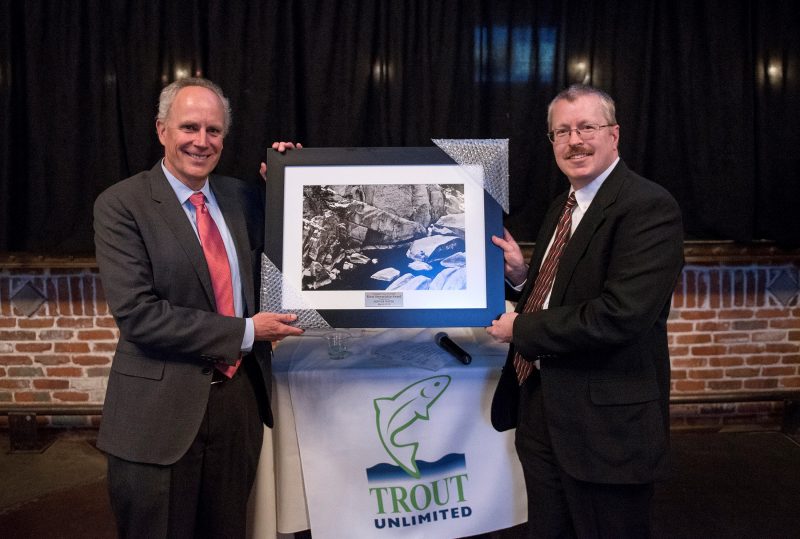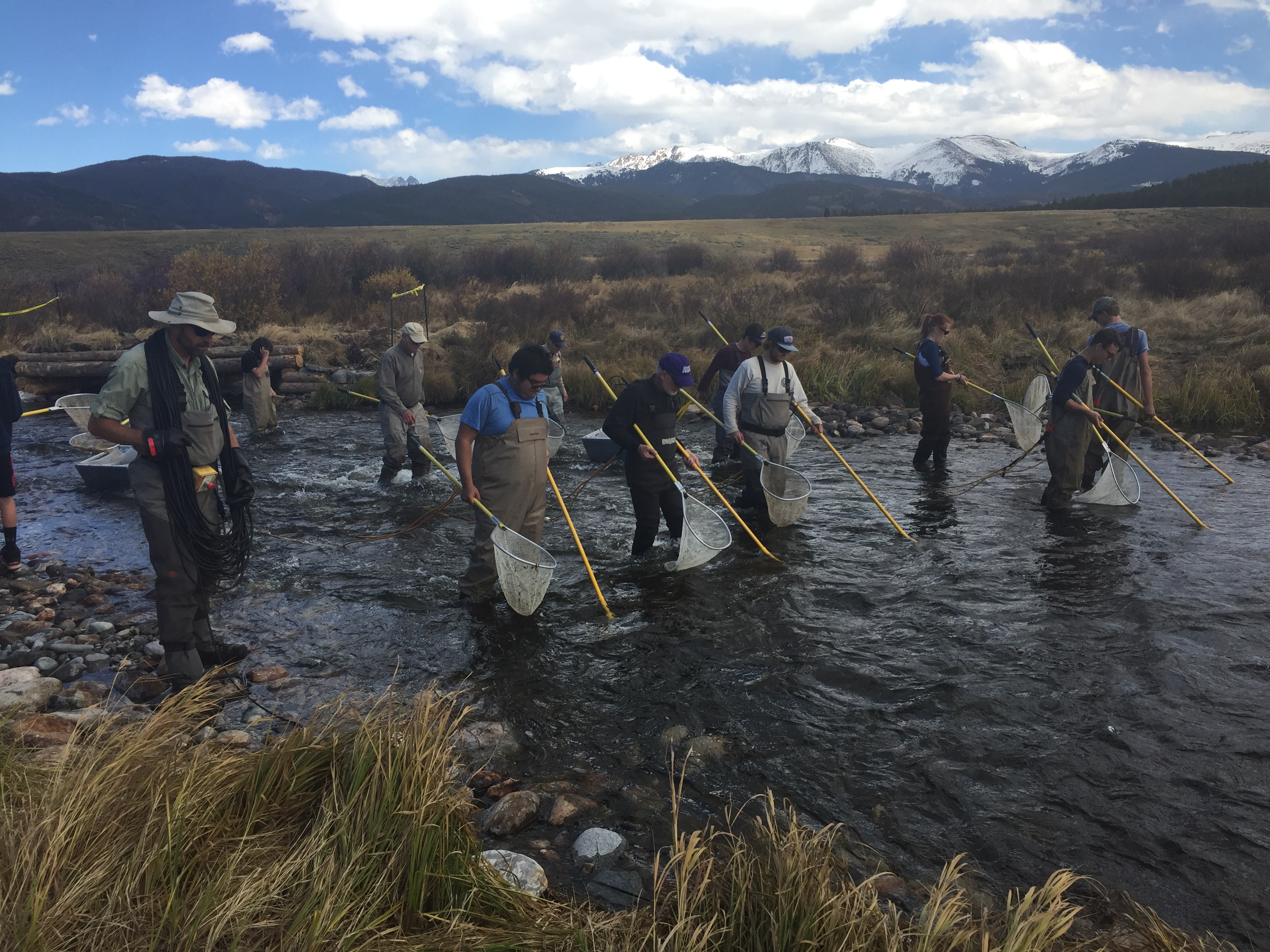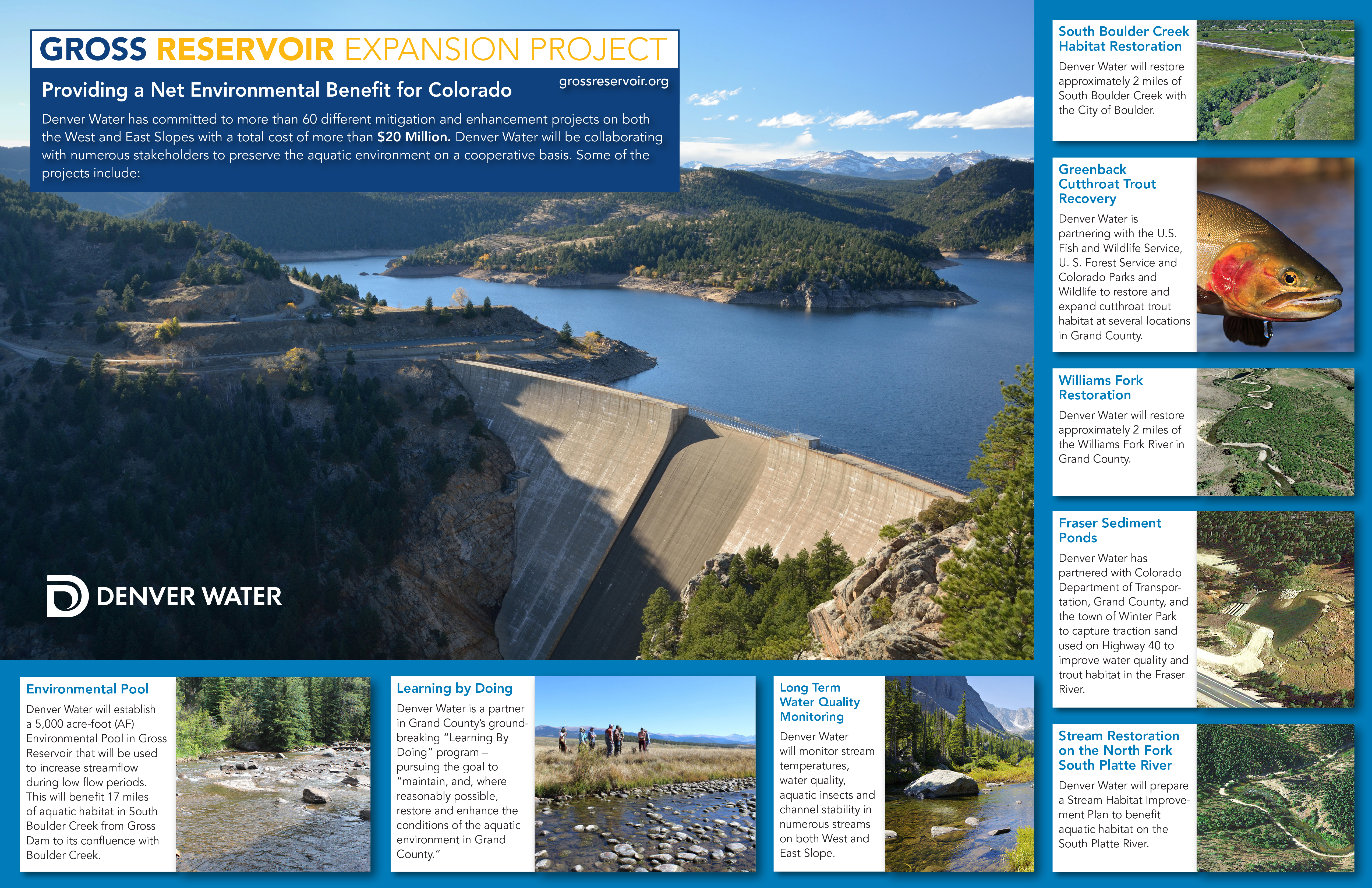
How a reservoir expansion helps rivers
One of the most important projects for ensuring a reliable and sustainable water future for a quarter of Colorado's population is being viewed differently than traditional water projects of the past.
“The Gross Reservoir Expansion Project will not be judged by whether it is completed, but rather how it is completed,” said Jeff Martin, program manager for the expansion project.
And, project supporters have noticed.
Former Gov. Hickenlooper, who spoke on the nearly 15-year-long process of collaboration and negotiations said:
“When we enter into doing large projects, how do we do that so that the overall system is going to be better off? We are going to not just maintain the quality that we have. We are going to have a higher water quality once this (project) is completed than we had to begin with.”
After years of cross-divide discussions and agreements surrounding the project, the Colorado Department of Public Health and Environment found in its study of impacts to water quality that the Gross Reservoir expansion will have a “net environmental benefit” to water quality in Colorado.
The obvious question is, how is this possible?
The answer?
More water in storage, combined with collaboration where once there was only conflict, means we can put water where the environment needs it, when it needs it. That, aided by more than $20 million in environmental commitment and operational changes Denver Water has committed to, make this seemingly illogical conclusion a reality.
Experts who have studied the issue of declining stream health in Grand County — the county from which Denver Water pulls water into Gross Reservoir — will tell you higher stream temperatures, especially along the valley floor where streams flatten out, slow down and heat up are of concern.
An issue that an expanded Gross Reservoir will help alleviate.
“Denver Water has worked to ensure that there are temperature safeguards built into the agreement,” said Jon Goldin-Dubois, president of Western Resource Advocates. “So, if the temperature rises in Western Slope waters, Denver Water can release additional water. The project ensures better river health on the Western Slope.”
The expansion will allow Denver Water to capture more water during wet and average water years, providing more flexibility to help stressed streams during hotter and drier times in Grand County.
“We’ve been really pleased that the mitigation plan that Denver Water stepped up and offered has some resources to make a difference for the Fraser River,” said David Nickum, Colorado Trout Unlimited executive director.
Another consideration is how, through this project, Denver Water can help protect treasured resources like Colorado’s state fish, the greenback cutthroat trout.
“A very huge benefit is the establishment of a new cutthroat trout population that we’re going to expand into Grand County,” said Bob Broscheid, Colorado Parks and Wildlife director. “Denver Water agreed as part of this project to help us fund a new population (of cutthroat trout) where they don’t currently exist.”
Environmental benefits are not limited to the West Slope. Denver Water, in partnership with the cities of Boulder and Lafayette, will include space for a 5,000-acre-foot environmental pool in the enlarged reservoir. Boulder and Lafayette will use their water to manage and improve stream health in South Boulder Creek below Gross Dam.
“Right now, South Boulder Creek below Eldorado Springs is often dried up completely during the winter,” said Nickum. “By working with Denver Water, Boulder and Lafayette can deliver water through that river down to their points of diversion. That’s another place where we can see a river that has been dried up actually restored with flows.”
“Really, it’s a whole different philosophical approach, and I give tremendous credit for Denver Water for them to embrace this,” said Gov. Hickenlooper. “As we make sure that we have a reliable, affordable source of water for the people that use Denver Water, we’re also going to make sure that we’re improving the water quality wherever that water comes from.”
“Bottom line, these environmental commitments are significant points of pride for us,” said Denver Water CEO/Manager Jim Lochhead. “They — along with the relationships we’ve built during the nearly 15 years of this project’s development — are part of Denver Water’s commitment to be a responsible community partner and to do the right thing. We’re proud that this project will help us achieve our goals of providing a secure water supply for our customers while providing net environmental benefit to state water quality.”
Denver Water’s commitments and permitting conditions we’ve agreed to during the almost 15-year collaborative process include, but are not limited to:
- Provide $2 million towards aquatic habitat improvements on the Upper Colorado River.
- Provide $1 million to the Upper Colorado River Wild and Scenic Management group to fund flow-related projects to protect the outstanding and remarkable values within segments of the Upper Colorado River.
- Provide $6 million to Grand County to use towards environmental projects, and continue to participate in the “Learning By Doing” collaborative effort, which has already resulted in tangible positive environmental impacts on the West Slope including:
- Building a sediment pond on Berthoud Pass to keep the Fraser River bottom clean. (Check out, “Good for drivers, bad for the Fraser River,” for more information.)
- Restoring a portion of Fraser Flats in Grand County. (See our video, “Keep it cool: Good for the Fraser River and its trout” for more information.)
- Releasing water into Ranch Creek in response to high temperatures found through water temperature monitoring. (See our video, “Searching for solutions to help trout keep their cool” for more information.)
- Monitor stream temperatures and water quality in Gross Reservoir, South Boulder Creek and the Fraser River Basin.
- Provide funding towards Colorado Parks and Wildlife’s cutthroat trout habitat projects to protect and restore native trout populations.
- Through a cooperative process, replace culverts on Fraser River, Cabin Creek and St. Louis Creek with Aquatic Organism Passage culverts that will enable free passage of fish and other aquatic organisms.
- Provide flushing flows in the Williams Fork and Fraser River basins.
- Provide more than 1,000 acre-feet of water in Grand County for environmental purposes.
- Complete a stream restoration project on South Boulder Creek in partnership with the City of Boulder.
- Create an environmental pool in Gross Reservoir that will be managed by the cities of Boulder and Lafayette to provide flows into South Boulder Creek during periods of low or no flows.
- Allow Grand County to store up to 2,500 AF of water in Williams Fork Reservoir for environmental purposes.
- Complete a stream restoration project on the Williams Fork River.
- Begin stream bank monitoring on the North Fork of the South Platte River and South Boulder Creek to identify erosion and/or unstable banks, and make repairs, as needed.
- Construct a fish ladder on Cabin Creek in Grand County.
- Convey approximately 540 acres of land near the Moffat Tunnel to the U.S. Forest Service for permanent protection and management as part of the National Forest System.
- This land conveyance, which includes forest, riparian and wetland habitats, represents mitigation for impacts to approximately 280 acres of NFS land that will be inundated by the Gross Reservoir expansion. Stated simply, Denver Water will provide nearly a 2:1 mitigation ratio of replacement acreage transferred to the U.S. Forest Service to offset those acres of NFS land that will be lost due to the expanded reservoir footprint.
- Protect raptor species, fight invasive species, relocate rare plant species and responsibly remove trees and brush in the reservoir’s expanded footprint.
- Continue to participate in the U.S. Fish and Wildlife Service’s Upper Colorado River Recovery Program and the Platte River Recovery Implementation Program, both designed to protect endangered species.



